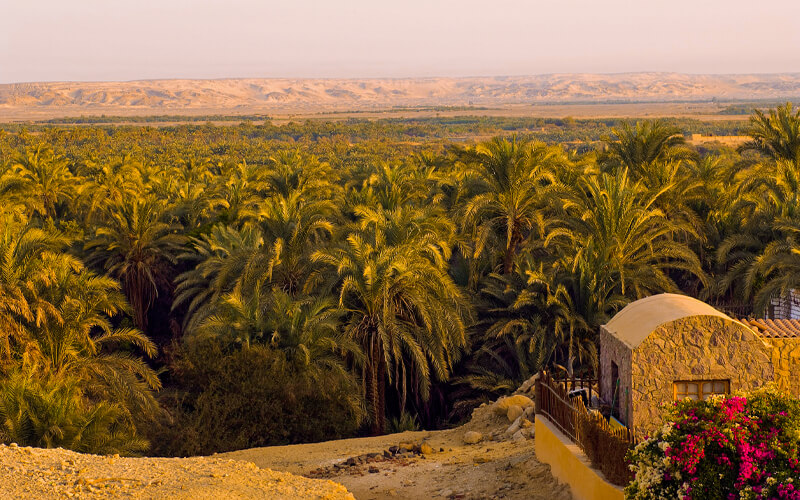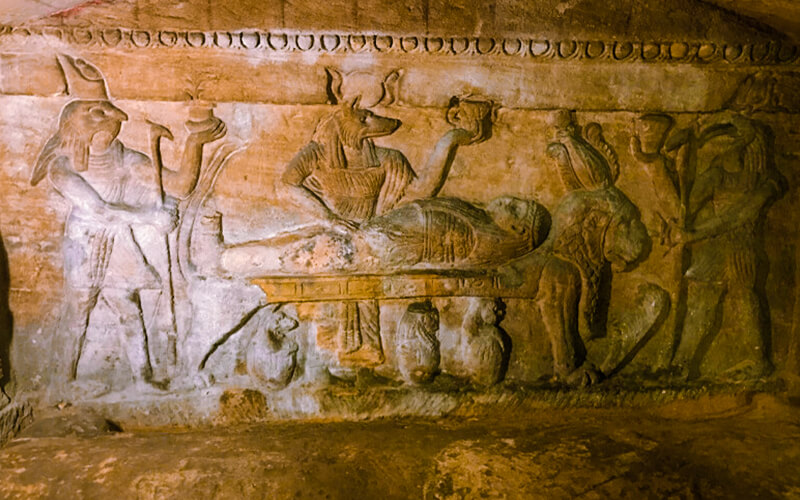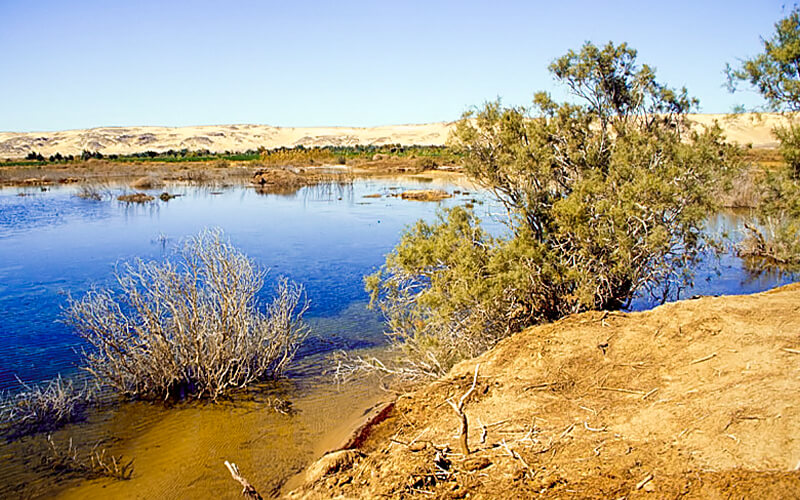Al Kharga Oasis
The Kharga Oasis, a beautiful oasis in the middle of the western desert, stands out like a jewel against the lifeless scenery of the desert. In this peaceful place, you can relax while taking in the beauty of the night sky. This site is one of the best in the country and one of the best anywhere in the world, showing the unique natural beauty and rich cultural history of Egypt’s Oasis. Kharga Oasis is the place to go if you want to visit a site that is not only mysterious but also full of amazing sights to see while you’re there.
If you’re looking to spend a fantastic vacation in Egypt check out our Egypt Excursions with our qualified Egyptologist with the best Egypt travel guide in Egypt and check Egypt Oases.
The History of Al Kharga Oasis
During the 12th dynasty, when the Hyksos ruled northern Egypt and the Pharaohs ruled southern Egypt and Nubia, the Kharga Oasis was an essential stop for desert caravans (1786 BC–1665 BC). During this time, Nubia was led by the Pharaohs. It was called Egypt’s “southwestern gate” because its southernmost part was close to the African continent.
During Egypt’s 13th dynasty, the Kharga Oasis was at its most prosperous, and it was a refuge for Egyptian Christians who wanted to escape the Romans’ oppression. During the Middle Kingdom (2134–1569 BC) and the New Kingdom (ca. 1350–1070 BC), there were a lot of large buildings, passageways, artifacts, and ruins (1550–1050 BC).
The famous dagger that belonged to King Tutankhamun was made from an iron meteorite found in the Kharga Oasis. Herodotus says that the Persian king, Campuses, and his army stopped at the Oasis to rest before continuing to Siwah, where they planned to destroy the Amon-Zeus temple at the Oracle.
Location of Kharga Oasis
On the west bank of the Nile Valley, around 200 kilometers west of the western desert, the Kharga Oasis is located 550 kilometers south of Cairo and 232 kilometers south of Asyut.
Kharga Oasis Attractions
1- The Temple of Hibis
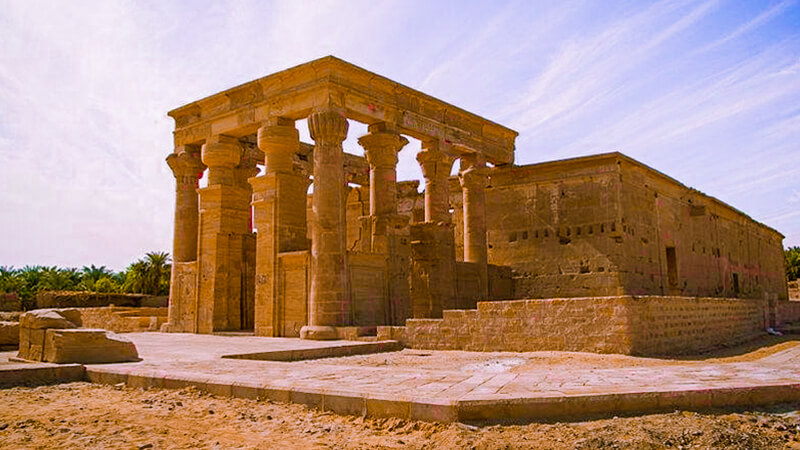
Temple of Hibis in Kharga Oasis
The Temple of Hibis is considered one of the most important ancient buildings in the Kharga Oasis. It has elements of Pharaonic, Persian, Ptolemaic, and Roman architecture. It was built during the 26th Dynasty, when Psamtik II was king, before the Persian invasion of 525 BC.
Under the rule of Ahmos II, the Hyksos and Persians worked together to finish building a temple where the holy triad could be worshipped (Amun, Mut, and Khonsu).
Ptolemy II made a few minor changes to the building of the temple that didn’t make much of a difference during the Greco-Roman period (380–246 BC) (258–246 BC). The temple was built in 69 AD. It has ports in the east, a holy lake, and a Roman gate. Inside the temple’s walls is a beautiful sanctuary filled with beautiful and unique inscriptions.
2- The Necropolis of Bagawat
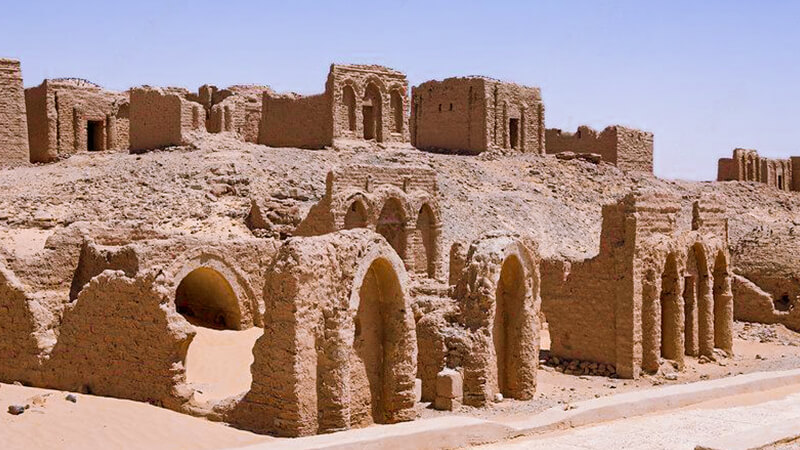
The Necropolis of Bagawat in Kharga Oasis
It is roughly 3 kilometers north of Kharga Oasis and 1 kilometer north of Hibis Temple. In the middle of it is a church that was built in the 1100s. This church was built when the Al-Bagawat cemetery was used as a place to bury people. It is made up of 263 tombs that look like chambers with domes. It is thought to have been a church in ancient Egypt, and it could have been the oldest church in the country. Ancient Egypt’s 27th dynasty was when the Temple of Al-Ghuwaytah was built. This temple was for the three gods. There are a lot of graves from the fourth and sixth centuries after the common era in the Coptic Christian cemetery. When it was in the Al-Bagawat Necropolis, this building was used as a church. At the Al-Bagawat Necropolis, one of the chapels has a scene from the life of Jesus Christ painted on the ceiling as a fresco. Moses leading the Jewish people out of Egypt is shown in one of the few paintings from the time of the Coptic Christians that is still in good shape. There are graves and tombs from both Christianity and paganism at these historic sites. There are also churches and temples from both religions. They were made between the second and sixth centuries, but no one knows for sure when. On the other hand, it is one of the world’s oldest and best-kept Christian burial grounds.
3- The Temple of Ghweita
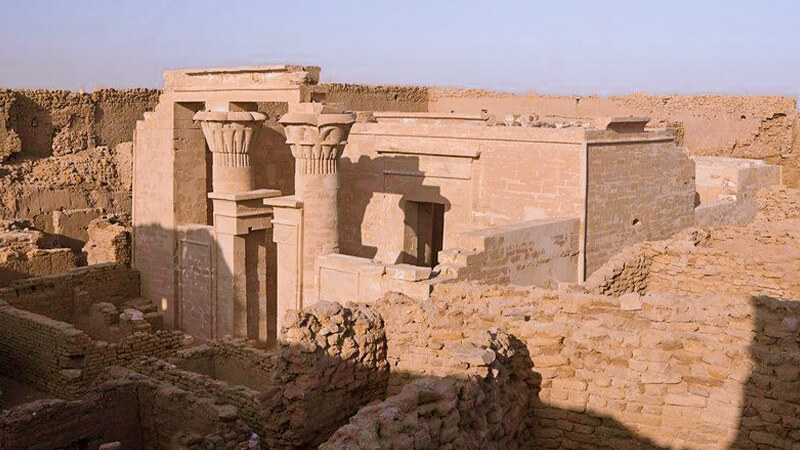
Temple of Ghweita in Kharga Oasis
The Temple of Ghweita is located 25 km south of Kharga. On a sandstone hill. This once-prosperous farming community’s beautiful fortress offers dominating views of the surrounding countryside. The village’s buildings formerly cascaded down the mountain and onto the plain below; now, only grapes remain. The tombs of Thebes attest to Ghweita’s exceptional grapes. This supports the hypothesis that ancient Egyptians occupied the region before modern fortification. Ghweita was created to honor the holy trinity, like the adjacent Hibis (Amun, Mut, and Khonsu).
The Hyksos and Persians conquered Egypt and erected this and the Temple of Hibis. It expanded considerably during the Ptolemaic period (third to first century BC). Amun, Mut, and Khonsu are honored in this well-preserved sandstone temple, as they are at Hibis. This temple was built atop a hill that had been a Middle Kingdom Pharaonic town during Darius I’s reign.
The sanctuary, or inner chamber, is one of the temple’s three chambers. Hapi, the Nile deity, holds ancient Egyptian nomes on the hypostyle hall’s lowest register. Images rotate clockwise. The sanctuary has many decorations.
4- Qasr Al Zayan Temple
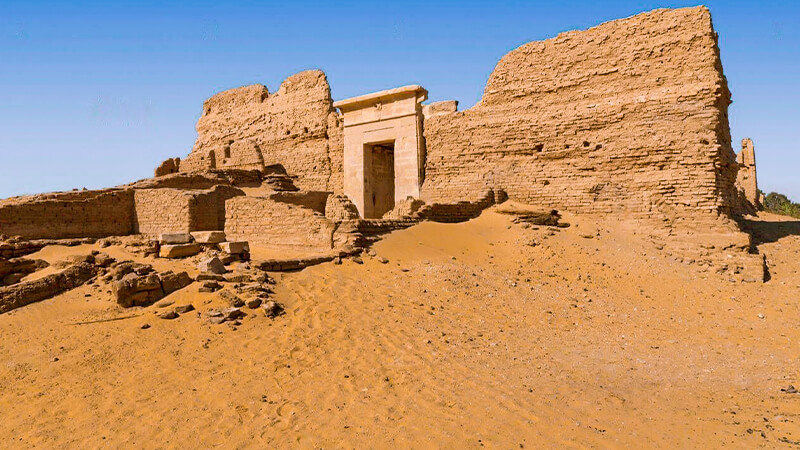
Temple of Qasr Al Zayan in Kharga Oasis
The Temple of Qaser Al Zayyan is five kilometers south of the Temple of Ghweita, in a west-facing direction. During the time of the Ptolemaic dynasty, this temple was first built. During the reign of the Roman Emperor Pius in the second century A.D., it was greatly expanded.
People would pay their respects to Amun Ra of Hibis in the temple of Qaser Al Zayyan. Inside one of the building’s many side chambers made of mud bricks, you can find a safe place made of white limestone stones.
5- Deir al-Munira Roman Fortress
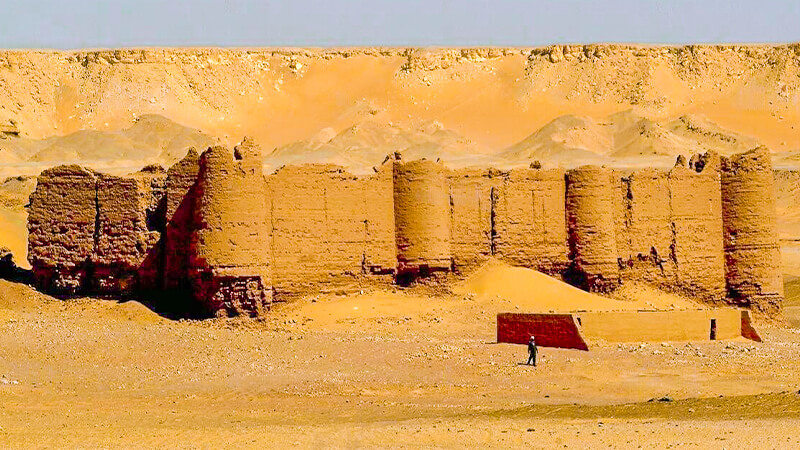
Deir al-Munira Roman Fortress in Kharga Oasis
The Darb al-Arbaeen caravan route connected Fasher in the Darfur state of Sudan to Asyut in the Nile Valley. This Roman fortification stood guard over the road. Mud bricks were used to build the Roman fortress of Deir al-Munira. It is 73 meters on a side and 80 yards long, with 12 towers. It stands out even now because it is 10 meters (32 feet) tall and has thick walls that are 3.6 meters (11.5 feet).
The Kharga Oasis is one of the few sites in Egypt that can genuinely express the fascination and magnificence of the ancient Egyptian civilization’s hidden beauties. No place on earth can compare to the mesmerizing beauty of this oasis; therefore, if you ever find yourself in Egypt, don’t pass up the opportunity to see such a magnificent location by not selecting one of our Egypt Vacation Packages. There is no other place on earth that can compare to the mesmerizing beauty of this oasis.

